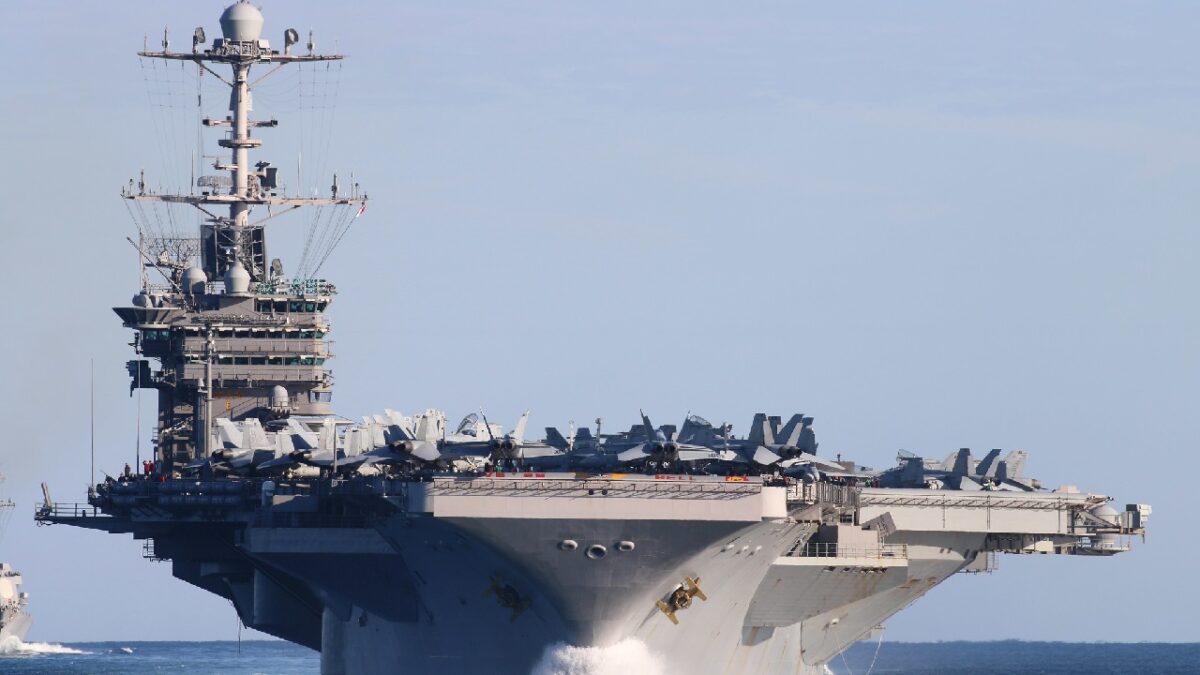Including amphibious assault ships (LHA), there are now 47 active aircraft carriers in the world, operated by fourteen navies. More than a third of the flattops are in service with the United States Navy, which maintains eleven nuclear-powered CATOBAR carriers, including ten Nimitz-class and one Gerald R. Ford-class.
In addition, the U.S. Navy operates two America-class LHAs of a planned 11; as well as seven Wasp-class ships – while an eighth was seriously damaged by fire and subsequently decommissioned last year.
The current U.S. fleet of Nimitz-class carriers will also be followed into service and replaced on a one-for-one basis by future carriers of the Gerald R. Ford-class, which are more automated in an effort to reduce the amount of funding required to maintain and operate the vessels.
In its 2018 report to Congress, the Navy stated its intention to maintain a 12 CVN force as part of its 30-year acquisition plan.
Carriers have been a crucial component of the Navy for the past 100 years. Here are some carrier facts by the numbers.
The First Aircraft Carrier
Converted from the collier USS Jupiter, USS Langley (CV-1, later AV-3) became the U.S. Navy’s first aircraft carrier when she was commissioned in March 1922. The first U.S. warship propelled by electric motors, she also became the test platform for developing carrier operating techniques and tactics while serving in the Pacific.
Reclassified as a seaplane tender (AV-3), she remained in service during the Second World War. While transporting U.S. Army P-40s to the Dutch East Indies in February 1942, she was attacked by Japanese aircraft and was scuttled by her escorting destroyers.
Massive Number Built During World War II
Even as the United States Navy operates more carriers than any other nation, it once operated an even more staggering number of flattops. During the Second World War, 155 aircraft carriers were constructed, including 122 escort carriers.
First Nuclear Carrier
Commissioned at Newport News, Virginia on November 25, 1961, USS Enterprise (CVN-65) became the first nuclear-powered aircraft carrier to enter service. Along with USS Bainbridge (DLGN-25) and USS Long Beach (CGN-9), she was part of the nuclear-task force, Operation Sea Orbit, from May to October 1964, circumnavigating the globe without refueling. The “Big-E” first took part in combat operations in Vietnam, and late in her career was used in the Iraq War. At the time of her inactivation, Enterprise was the third-oldest commissioned vessel in the U.S. Navy after the wooden-hulled USS Constitution and the USS Pueblo (AGER-2).
Five Carriers Are Preserved as Museum Ships
There are currently five U.S. Navy aircraft carriers that have been preserved as museum ships – including four Essex-class carriers: USS Yorktown (CV-10), USS Intrepid (CV-11), USS Hornet (CV-12), and USS Lexington (CV-16); as well as USS Midway (CV-41), the lead ship of the late WWII class of carriers.
No Others Will Be Saved
With the decommissioning and planned scrapping of USS Kitty Hawk (CV-63) and USS John F. Kennedy (CVN-67) – the last two U.S. Navy conventionally powered carriers – it is unlikely there will be another U.S. flattop preserved as a museum. Though there were efforts to preserve those ships, they instead were sold for just one cent each.

The aircraft carrier Harry S. Truman (CVN 75) participates in a composite unit training exercise (COMPTUEX). Truman is underway as a part of the Harry S. Truman Carrier Strike Group (HSTCSG) performing COMPTUEX, which evaluates the strike group’s ability as a whole to carry out sustained combat operations from the sea, ultimately certifying the HSTCSG for deployment. (U.S. Navy photo by Mass Communication Specialist 2nd Class Tommy Gooley/Released)





